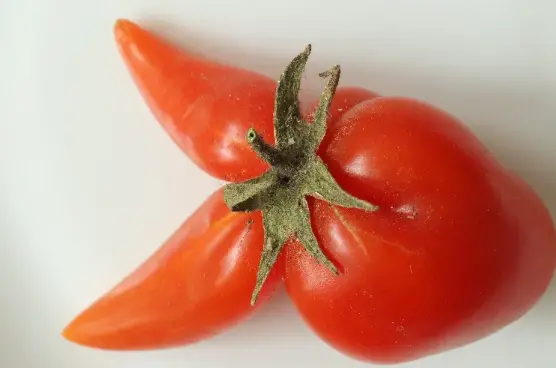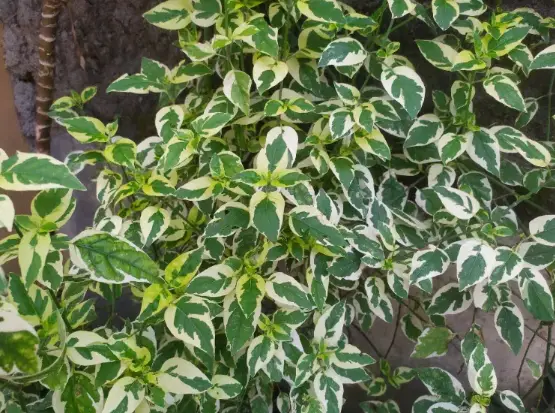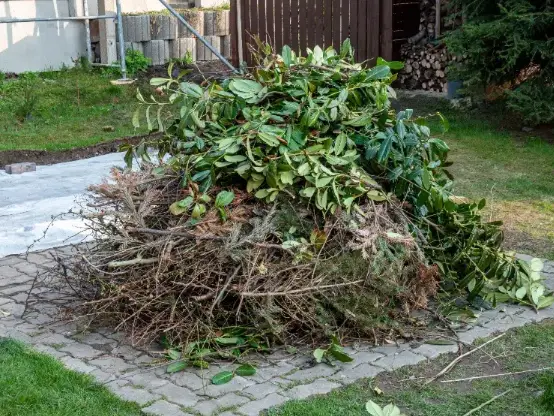Tomatoes are a garden favorite thanks to their refreshing taste and versatility in the kitchen. However, they can sometimes develop deformities, which can leave gardeners scratching their heads. Deformed tomatoes, often called “cat faces,” are a common issue that many gardeners encounter, and they are usually caused by environmental or physiological factors rather than a disease. In this article, we’ll explain why tomatoes become deformed, how to fix the problem, and tips for keeping your tomato plants healthy during the summer months.

What Are Deformed Tomatoes?
Deformed tomatoes are typically characterized by the following:
- Depressions in the fruit
- Cracks or scars
- Sunken lines or unusual shapes
These deformities often appear as a “cat face” shape, which is why the condition is sometimes called this. Although deformed tomatoes are not usually the result of a disease, the openings created by the deformation can attract pests or diseases, making the fruit appear to be more seriously affected. In most cases, deformed tomatoes are still edible—simply remove the hardened tissue, and you’ll find a tasty tomato underneath.
Why Do Tomatoes Get Deformed?

Several factors can contribute to tomato deformities, including:
1. Temperature Extremes
Tomatoes are particularly vulnerable to abnormally high or low temperatures, which can prevent proper pollination. For example, heatwaves can interfere with the plant’s ability to set fruit, leading to deformities like the “cat face” appearance.
2. Irregular Watering
Inconsistent watering, such as watering too frequently or not enough, can also cause stress to the tomato plant, resulting in deformed fruit. Maintaining regular watering is crucial for the plant’s growth.
3. Over-Fertilization
Excessive use of nitrogen fertilizers can encourage lush foliage growth at the expense of fruit development, leading to irregularly shaped and deformed tomatoes.
4. Herbicide Exposure
The use of certain lawn herbicides in nearby areas can also interfere with tomato development, causing deformities.
5. Tomato Variety
Some varieties of tomatoes, like beefsteak tomatoes, are more prone to deformation. However, newer varieties tend to be less affected by this issue.
What to Do for Prevention?

While you can’t control the weather, there are several steps you can take to reduce the likelihood of tomato deformities:
1. Choose Disease-Resistant Varieties
Consider selecting tomato varieties that are resistant to common diseases and avoid susceptible ones like beefsteak tomatoes.
2. Temperature Management
Try to delay planting your tomatoes until both the soil and air temperatures are warm enough to encourage healthy growth and pollination.
3. Use Mulch
Applying mulch around your tomato plants will help keep the soil cooler during hot summer months and retain moisture, reducing stress on the plants.
4. Water Regularly
Ensure that your tomatoes receive deep watering on a consistent schedule, particularly when there is no rain. Avoid waiting until the leaves start to wilt before watering.
5. Encourage Pollination
To improve pollination, plant a variety of flowers around your tomato plants. Also, avoid using harmful insecticides that could damage bees and other important pollinators.
Bonus: Tomato Care in Summer

Proper care during the summer months is essential to keeping your tomato plants healthy and productive. Here are a few tips for summer care:
1. Avoid Fertilizers and Pesticides
Instead of using synthetic fertilizers and pesticides, opt for herbal preparations that are more natural and help strengthen your plants’ immunity. For example, nettle manure and fermented comfrey extract are excellent natural solutions.
2. Use Nettle Manure and Comfrey Extract
To boost your plants’ defenses, spray once or twice a month with a diluted mixture of nettle manure or fermented comfrey extract. These solutions are especially effective for preventing issues before they arise.
Conclusion
Deformed tomatoes can be a frustrating issue for gardeners, but by understanding the underlying causes and taking preventive measures, you can reduce the likelihood of deformities and keep your tomatoes healthy. Regular watering, careful fertilization, and the right growing conditions are key to ensuring that your tomatoes thrive. With a little care, you can enjoy beautiful, delicious tomatoes all summer long! 🍅🌞



